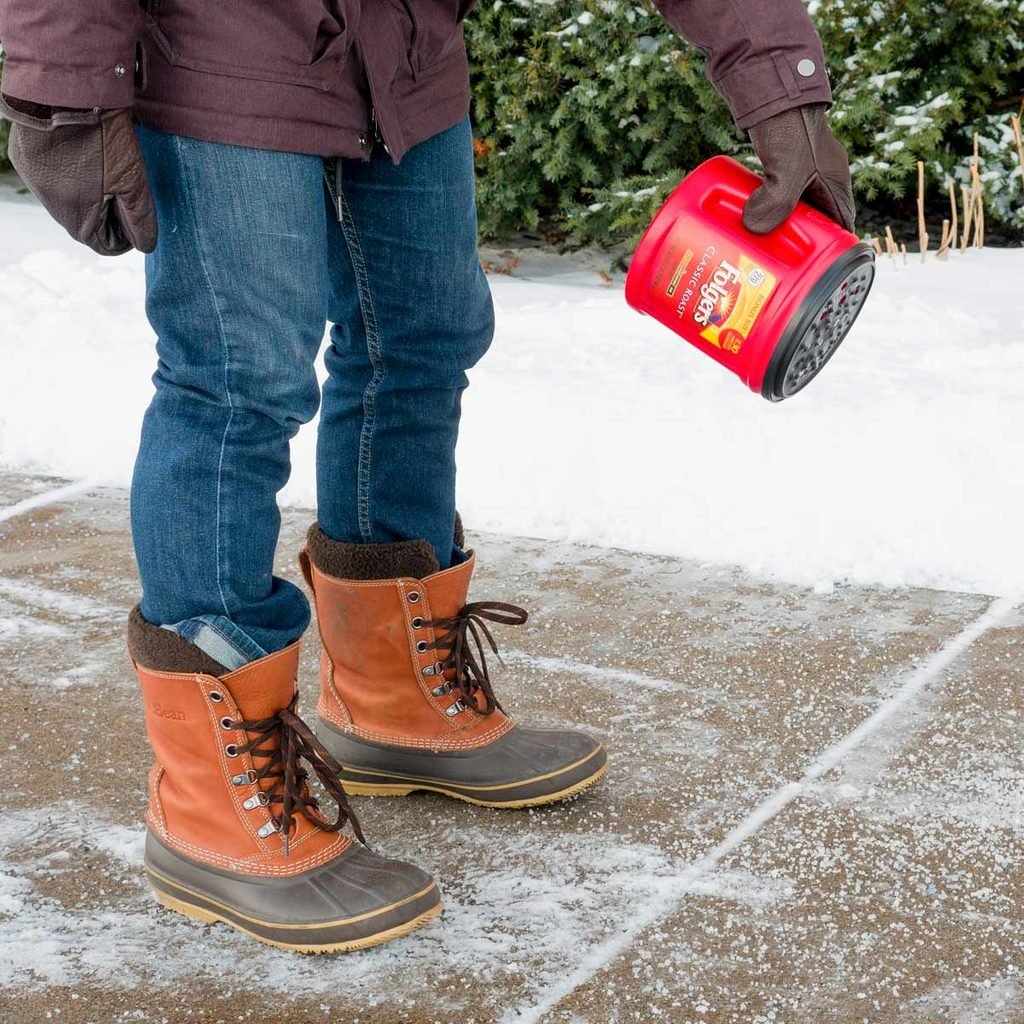Innovative and Safe Sidewalk Salt Alternatives
Updated: Oct. 01, 2023

Clearing ice from your sidewalk is important for your safety and that of others. Salt is one way, but there are better alternatives.
Parts of the country have already been hit by their first wintry blasts, which means many people have had to deal with driveways and sidewalks covered in snow and ice. Not only is that ice a hazard to homeowners and their neighbors, but in some states and municipalities you might even be required by law to clear your sidewalk after a winter storm. If you don’t, you might be liable for any injury caused by uncleared ice. These are serious consequences!
Salt (sodium chloride) has long been the standard for melting ice, because it lowers the freezing point of water. It’s also relatively inexpensive. But rock salt has many downsides. It can cause rust, harm the environment, ravage concrete and damage your lawn and landscaping. Fortunately, there are alternatives that can mitigate these problems.
On This Page
Calcium Magnesium Acetate
Calcium magnesium acetate (CMA) is an alternative, but it’s not perfect. It can deoxygenate the waterways it’s washed into, which can be harmful for aquatic life. Otherwise it’s a safe, effective ice melter that doesn’t harm plants, pets or your sidewalk. It’s much more expensive than other ice melting products, however. Look for products that are listed with CMA on the label, like Snow Joe.
Sand or Kitty Litter
If you’d rather not use chemicals to melt the ice quickly but would like to make your sidewalks safer to walk on, spreading sand or kitty litter on top of the ice can be effective. It does get messy, as you will often track it into your house on your shoes. And once winter’s over you should sweep it up, since either one can clog street gutters and sewers. It does nothing to actually melt the ice; it merely provides traction.
Sugar Beet Juice/Brine
Surprisingly, this sweet juice made from sugar beets is an effective ice melter. However, most households won’t consume enough beets to make it effective for home production unless you make massive quantities of borscht every winter. According to the Morton Arboretum in Lisle, Ill., beet juice lowers the freezing point of water to -20 degrees F, and it doesn’t affect plant or pet life. It can, however, stain concrete.
You can purchase a sugar beet juice-based product that makes application easy. Remember, however, this brine does contain salt, so it could stick to the underside of your car and cause corrosion if you use it on your driveway. Other brines, including cheese brine and pickle juice, can work in a similar manner, but often require quantities larger than the typical household has on hand.
Coffee Grounds
This might be best if you run a coffee shop, but spent coffee grounds can help give you traction on slippery pavement. The dark color helps absorb the heat of the sun to melt the ice a bit, and the nitrogen in the grounds can help melt the ice. Mostly, much like sand, it will add friction between your boots and the ice. Most people don’t drink enough coffee in a household to make a huge difference.
Alfalfa Meal
Alfalfa meal is an all-natural fertilizer that works surprisingly well as an ice melter, like rock salt. It contains plenty of nitrogen, which helps melt the ice, while providing gritty traction. A bonus — it smells good, and in spring it’s a good fertilizer for your lawn.
Heated Mats
Heat is one sure way to beat the cold. Some cities throughout the world, including Helsinki, Finland, actually have heated sidewalks to keep them free of ice. Plugging in a heated snow melting mat is one way to keep places like the front step of your home free of ice. This mat, for instance, can melt up to two inches of snow per hour, and is meant to be left out all winter long.
